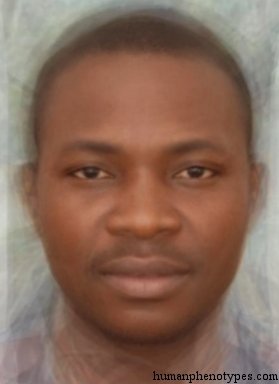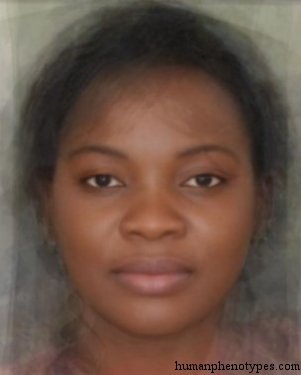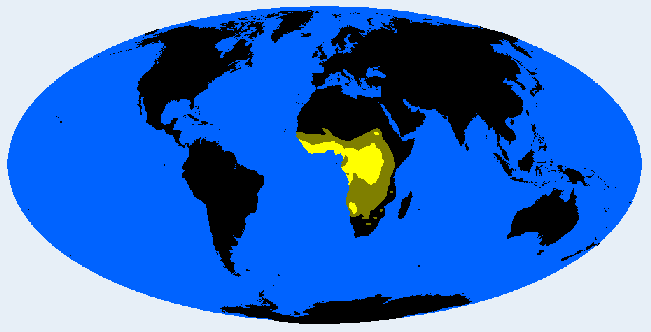Description:
Widespread Central African type, typical for the agricultural forest populations. Compared to savannah types (Sudanids, Bantuids) legs are shorter with big calves, stature lower and more thickset, faces broader, skin fairer, body hair stronger, and nasal root more depressed. Early anthropologists thought it was an old type, later regarded as a relatively recent adaption to humid tropical climate. The most typical variety is the short, round-skulled Congolesid of the Congo basin, which has a taller, darker West Congolesid subvariety. The long-skulled counterpart in West Africa is the Guinesid. Between both types exists a taller Guineo Camerunian variety. A special, more admixed form is the Mundu Mangbeto variety. Very ancient is the black-skinned southern Mountain Dama type. Slavery brought Congolids to the Americas, where they constitute an important element today. Recent migrations are bringing them to Europe and parts of Asia.Names:
Congolid (Biasutti, 1941), Kongoid (Drexel, 1955). Palänegrid (Eickstedt, 1934, 1952; Vogel, 1974; Knussmann, 1996), Tropical (Debets, 1974), Guinéenne-Congolaise (Vallois, 1968) , Silvestre (Biasutti, 1967), Hyläid (Fleischhacker, 1975), Hylänegrid (Lundman, 1967), Nègre Paléotropicale (Montandon, 1933).





